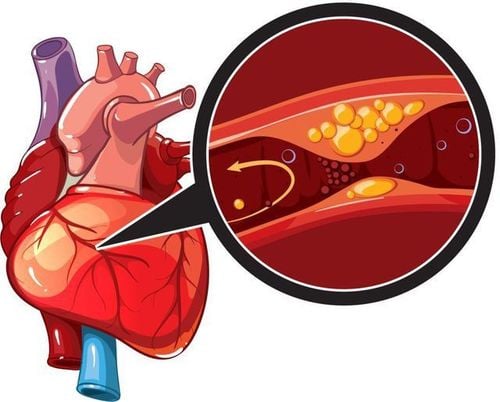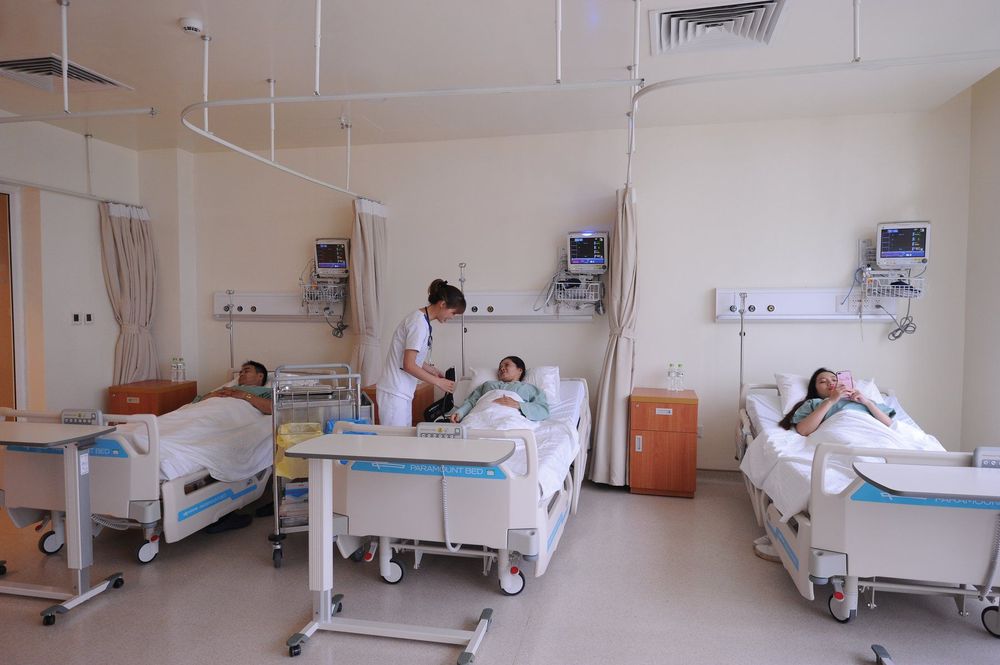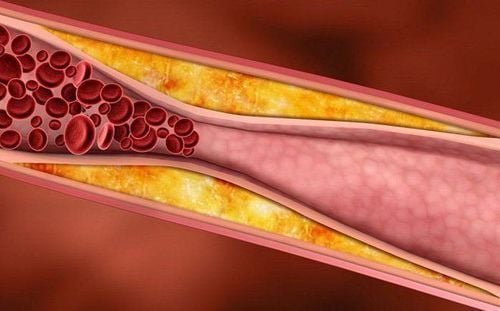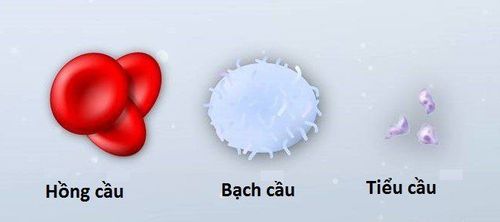This is an automatically translated article.
The article was professionally consulted with Doctor General Internal Medicine - Department of Medical Examination & Internal Medicine - Vinmec Hai Phong International General Hospital.
Coronary artery disease is a fairly common chronic disease today. In addition to lifestyle changes and medical adherence, coronary angioplasty and stenting are a radical intervention, helping to restore good blood circulation and significantly improve patients' symptoms.
1. What is angioplasty?
Ischemic heart disease is a fairly common disease in modern life. The subjects that are often susceptible to the disease are the elderly, with a history of hypertension, diabetes, dyslipidemia and smoking.
The cause of the disease is due to atherosclerosis of the blood vessels that feed the heart, causing blockage, restricting blood flow to the supply of blood and nutrients to the heart, causing the heart to become ischemic and contract poorly, reducing the ability to eject blood. . If poor cardiac contractility persists for a long time, the heart will gradually decline and the disease becomes ischemic cardiomyopathy.
Besides lifestyle changes, medications to control blood pressure, and other risk factors, the optimal treatment in cases of ischemic cardiomyopathy is coronary revascularization to increase blood pressure. blood to the heart. In particular, angioplasty, also known as percutaneous coronary angioplasty and stenting, is a minimal intervention that helps widen the lumen of the narrowed coronary arteries besides a rather invasive method than bypass surgery. coronary artery.
The nature of angioplasty is just a percutaneous procedure, the patient is fully awake during the procedure. The doctor will access the coronary artery system through the radial artery at the wrist or the femoral artery below the inguinal crease. A guide catheter is placed first, upstream of the artery back to the aorta, and into the left and right coronary foramen. A volume of contrast medium is injected here so the doctor can see the narrowing. If the stenosis is localized and proximal, the doctor will insert the balloon into the narrow segment and inflate it with the appropriate pressure.
Atherosclerotic plaque will be pressed against the vessel wall. Then, the stent, essentially a metal support, will be inserted and released at this site, helping to maintain the ability of the newly released blood to recirculate in the long term. Finally, the entire instrument will be removed and the bandage will stop bleeding at the needle puncture site.

2. Who is assigned to perform angioplasty?
Angioplasty is indicated in patients with a diagnosis of ischemic cardiomyopathy. However, before progressing to heart failure, cases of ischemic heart disease that do not respond well to medical treatment, whose symptoms are not relieved, should be considered for early intervention before myocardial damage. physical injury. Even in patients with ischemic heart failure, with effective reperfusion, cardiac function will be partially restored.
Besides, angioplasty is also often used as an emergency treatment solution for acute myocardial infarction. This is the outstanding advantage of immediate reperfusion when compared with bypass surgery. Accordingly, in patients with acute chest pain in the first few hours, the test shows elevated cardiac enzymes will be consulted for coronary angiography and stenting at the location of the "culprit" artery. Since then, the myocardial area is immediately supplied with blood, preserving the ability to contract, reducing the risk of necrosis progressing to pump failure.
However, angioplasty is not optimal in all patients. In cases where multiple coronary arteries are narrowed at the same time or one branch is narrowed in many places, especially in patients with a history of diabetes, long survival, other defects requiring repair in the heart and Following and especially the acceptable surgical risk, bypass surgery should be given more consideration.

3. What is the procedure for angioplasty?
Before performing angioplasty, if it is not an emergency intervention, every patient is thoroughly examined, performing the necessary laboratory tests to assess whether there is really a "candidate" of reason. consider this intervention or not. If the diagnosis is not clear, and the symptoms of ischemic heart disease are too vague, the doctor will sometimes order additional stress tests, looking at the response of the heart muscle.
Once indicated, the patient will be arranged in advance to prepare, fast and clean the body. On time, the patient will be taken to the operating room, under local anesthesia of the wrist or thigh, and the duration of the procedure will depend on the location, degree of coronary blockage as well as the number of stents needed. The whole process is done under the x-ray screen.
After the procedure is over, the patient will be bandaged at the puncture site and quickly transferred to the room to rest, eat and drink a lot of water so that the contrast agent is discharged quickly. The compression bandage will be kept for at least 24 hours; If at the inguinal fold, the patient must limit the movement of the leg on the side of the intervention, all activities should be done at the bed.
The stay is usually within a few days. After that, the patient will be instructed to exercise mobility with increasing levels of exertion. In addition, medical treatment should be strictly followed and cardiovascular function re-examination every month thereafter.
4. What to watch after angioplasty?
Immediately after an angioplasty procedure, especially in emergency situations, blood is recirculated to continue to nourish the myocardium. Therefore, the symptoms of myocardial ischemia will be completely improved. If the patient has had heart failure before, the feeling of fatigue, continuous shortness of breath also quickly subsides.
From there, the patient will return to the movements in daily activities as before without any difficulty. If you follow the cardiovascular rehabilitation exercises, your ability to exercise will certainly improve, and your quality of life will improve dramatically.
However, at each follow-up visit, the physician always monitors whether the symptoms of myocardial ischemia persist, the patient's exercise capacity decreases or does not recover, or the patient's symptoms are suspected. of arrhythmia, complications of the procedure.... If there are any symptoms, the patient should be examined again soon. It is likely that the patient will have a coronary angiogram to check the connection of the stent, to screen for the possibility of restenosis in the stent as well as other complications.
Complications of angioplasty and coronary intervention from simple to complex are:
Pain, bruising at the puncture site: No specific intervention is required, the lesion will self-relieve. Hematoma at the puncture site: Prolong the time of compression. Sometimes the hematoma is large, requiring surgical suturing and decompression. Contrast-induced acute renal failure: After the procedure, it is necessary to drink a lot of water to clear the contrast in the urine. However, some cases of kidney failure require emergency hemodialysis. Contrast drug allergy: With many different degrees, from itching, erythema on the skin to respiratory muscle spasms, cardiac arrest, and cardiovascular collapse. Stroke and embolism: Due to vascular intervention, the risk of dissection and embolization by atherosclerotic plaques is unavoidable. Pericardial hemothorax, cardiac tamponade: Due to the procedure of stabbing the coronary artery or perforating the heart wall, blood flows massively into the pericardial cavity. At this time, it is necessary to open and drain the pericardium urgently, if delay can be life-threatening.

5. Advantages of performing angioplasty at Vinmec Times City
Cardiovascular disease is generally a complex specialty, in which surgical interventions in the heart are advanced and sophisticated techniques. Therefore, understanding the benefits and risks of cardiovascular intervention, as well as choosing a reputable place to perform, having good doctors and good equipment is extremely necessary.
Accordingly, with the goal of comprehensive health care for the community, the Heart Center has been built step by step and has now become one of the leading centers of Vinmec International General Hospital.
Acting as the core foundational value of the Cardiology Center, the team of expert doctors are experienced professors, doctors, specialist doctors, and masters with great reputation in the field. medical treatment, surgery and application of advanced techniques in the diagnosis and treatment of cardiovascular diseases.
In which, coronary angiography and intervention have long been very popular at Vinmec, considered as the leading procedure with an almost absolute success rate. To do so, the Center regularly organizes comprehensive cooperation programs with leading universities, institutes and specialized hospitals in the country and internationally. from which advanced knowledge, techniques, inventions and applications are constantly being shared, exchanged, learned and applied.
Moreover, the Cardiovascular Center of Vinmec Times City International General Hospital has been invested with modern and quality equipment that is on par with the most prestigious hospitals in the world. Here, the system of clinics, operating rooms, intervention rooms and inpatient rooms meeting JCI international standards (Joint Commission International) are arranged at the hospital according to specific areas and in a closed sequence. to make the patient care process as convenient as possible.
In summary, coronary angioplasty and stenting are the first line of treatment for coronary heart disease, helping to improve cardiovascular function, relieve symptoms and improve quality of life for patients. Choosing a hospital that is reputable, has good doctors and good equipment is extremely necessary to protect the health of yourself and your loved ones.
In April & May 2021, when there is a need for cardiovascular examination and treatment at Vinmec International General Hospital, customers will enjoy double incentives:
- Free specialist examination and 50% discount many cardiology packages such as:
+ Basic Cardiovascular Screening Package
+ Hypertension Checkup Package
+ Heart Failure Checkup Package
+ Coronary Cardiovascular Examination Package
+ Comprehensive Cardiovascular Checkup Package
- 50% off cost Fees for customers with post-examination treatment indications. The program is limited to the corresponding technique of each hospital and to customers who perform this treatment technique for the first time at Vinmec.
Please dial HOTLINE for more information or register for an appointment HERE. Download MyVinmec app to make appointments faster and to manage your bookings easily.













